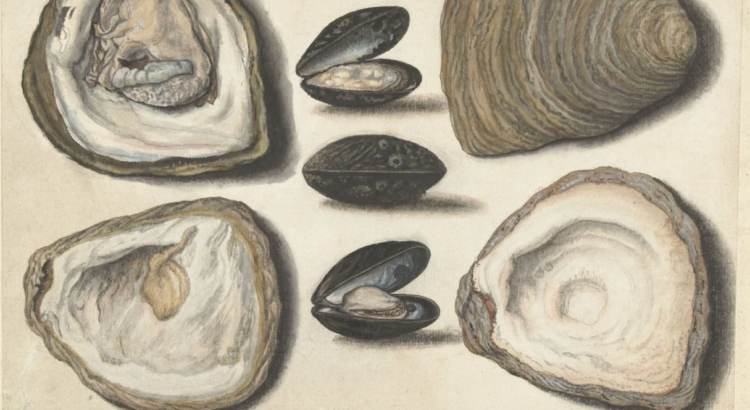To some, oysters are a slimy goodie of sea snot, to others a luxury item preferred to be consumed with a glass of bubbles. But have oysters always been a status object?
People have been eating oysters for centuries. Even as far back as prehistoric times. Not very surprising. After all, oysters are not very mobile. Collecting them was easy. Unlike opening the oyster. We know that oysters were already eaten in the Middle Stone Age through archaeological excavations at Mesolithic sites along the European coast. This is because oysters and other shellfish produce a relatively large amount of waste after consumption. For a little bit of food, large shells were left behind. Because eating oysters produced relatively large amounts of waste compared to other food items, it is difficult to estimate which seafood was consumed the most and how large a role consuming oysters played in the daily meal.
Oysters barely appear in ancient cookbooks. They were found once in one Roman cookbook and appear sporadically in cookbooks from the late Middle Ages. However, this does not mean that oysters were not eaten in the Netherlands during that period. Cookbooks and cookery writings in the late Middle Ages were mainly aimed at the upper class, containing dishes that were not common to the top of society either. This could mean several things, for example, that oysters were “too common” and cheap during the late Middle Ages to be included in these cookbooks or were so obvious in cuisine and meals that they need no explanation or preparation method and therefore were not included in these books or people preferred not to consume them at all.
f
Oysters as a luxury product?
f
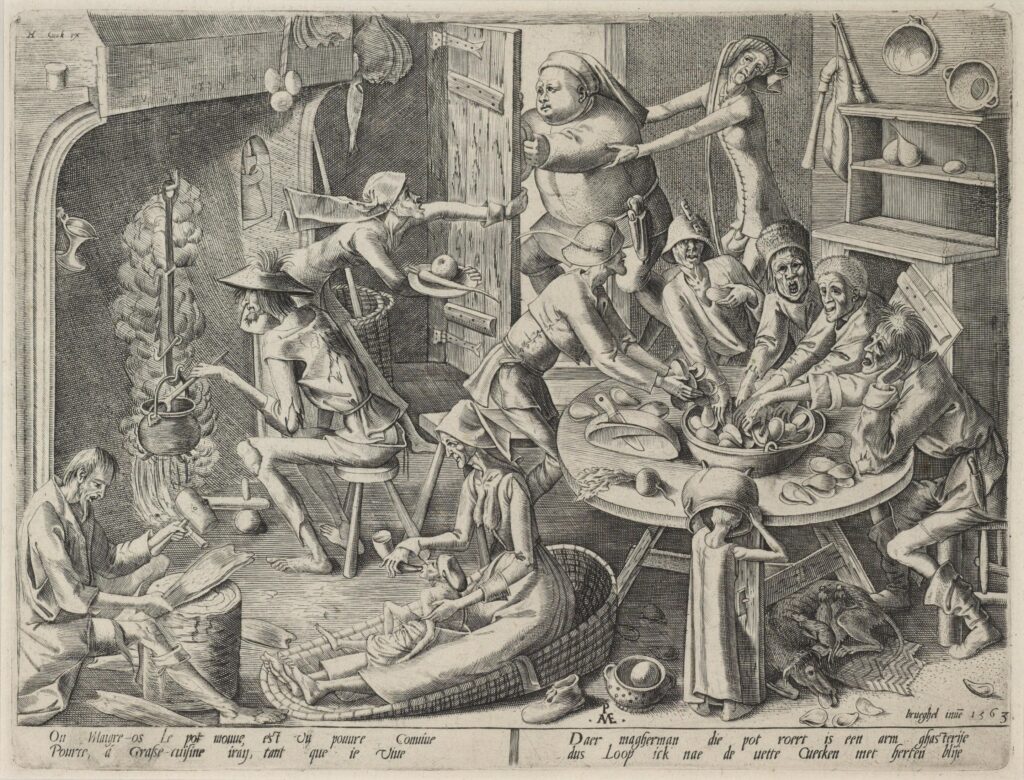
f
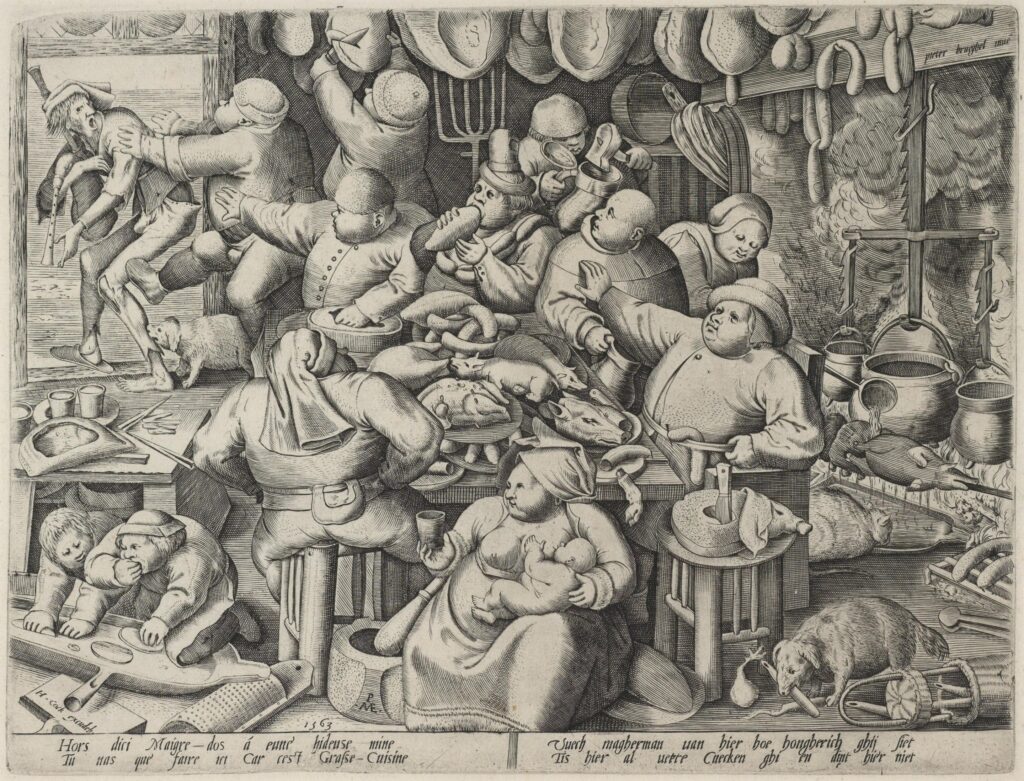
Pieter Bruegel the Elder (c. 1525 – 1565) once created the works The Lean Kitchen and The Fat Kitchen. Unfortunately, the original works have been lost, but engravings by Pieter van der Heyden (1563) based on Pieter Bruegel’s designs have survived.
Interestingly, on The Lean Kitchen we encounter various types of shells and sea creatures, while on The Fat Kitchen we see almost only meat products and especially pig. The shells in The Lean Kitchen are described as oysters. This would mean that in Bruegel’s time oysters were cheap and not a luxury item or status object, as we know the oyster today. However, the oysters depicted in Bruegel’s work resemble mussels in shape. This makes it unclear whether they are actually oysters. Especially since mussels were later called the poor man’s oysters, we learn little about the economic value of oysters in the time of Bruegel the Elder.
f
Oysters as an aphrodisiac
f
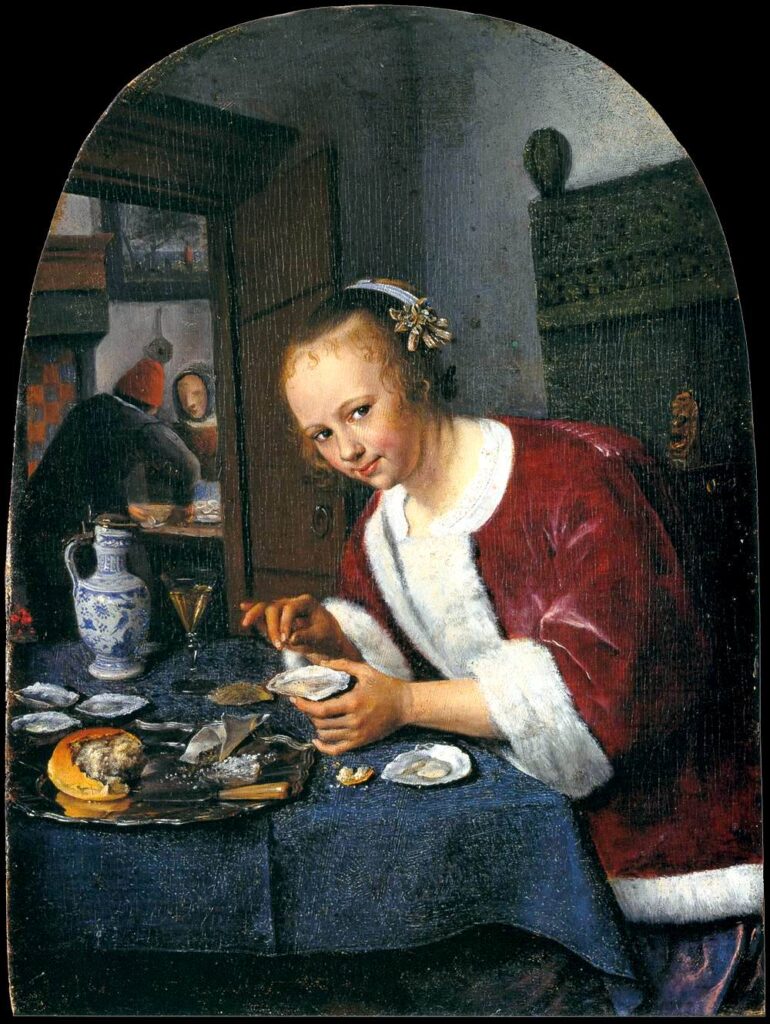
After the Middle Ages, the oyster really took off as a status object. A popular idea for this was that the oyster would be an aphrodisiac. As a result, the crustacean can be found many times in 17th century paintings.
One of the best known examples of this is The Oyster Eater (ca. 1586 – 1650) by Jan Steen. This work shows a young woman opening an oyster. There is nothing erotic or exciting about the gesture itself. But her gaze, with which she looks directly and seductively at the viewer, gives the image a different connotation. Keeping in mind the idea that oysters are supposed to be aphrodisiacs, the offering of oysters is a familiar motif that should send a clear signal. The woman is thus identified as a beautiful seductress.
f
f
f
De verstandige Kock or sorghvuldige huyshoudster (1667)
f
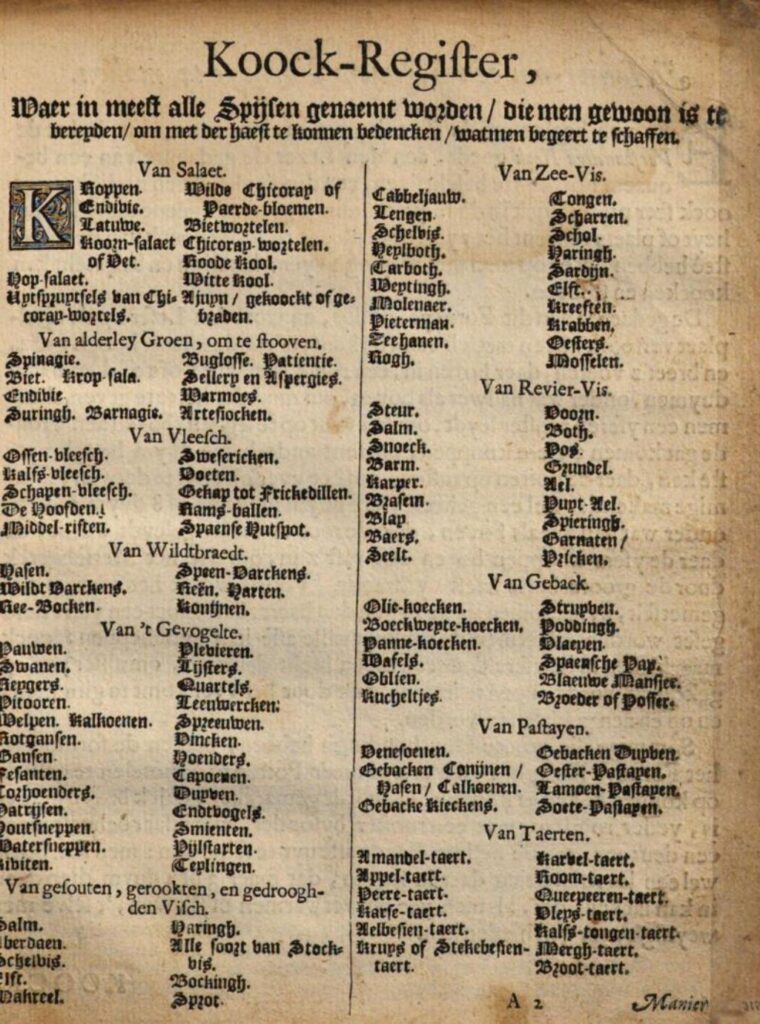
That oysters were popular in the Netherlands in the seventeenth century can also be seen in cookbooks such as the 1667 cookbook De verstandige Kock or sorghvuldige huyshoudster. De verstandige Kock was a cookbook for the elite and the only Dutch-language cookbook published in the Republiek der Zeven Verenigde Nederlanden in the seventeenth century. This book includes a cooking register containing all the products mentioned in the book and “die men gewoon is te bereyden.” These products are thus products any “verstandige kock“ or “sorghvuldige huyshoudster” is expected to be able to prepare. Interestingly, oysters are mentioned in the same breath as mussels and their preparation is all discussed in terms of the mussel. The oyster is not otherwise mentioned in the book. This may be because they can be prepared in the same way or that people preferred to eat oysters raw. In that case, further preparation is not necessary. Especially for raw oysters, it is important that they be eaten fresh. When the oysters were cooked or fried, for example, this was less important.
f

Nowadays, it is impossible to imagine the oyster out of the luxury segment. The flat oyster, which was extremely popular in the seventeenth century, has unfortunately succumbed to its own success and is rare today. New oyster varieties have taken over. The chances that these oysters will go extinct are slim. In fact, today oysters are artificially bred for consumption. Since oyster prices are determined by negotiations between breeders, dealers and buyers and have status as a luxury item, it is expected that they will remain expensive and therefore seen as a luxury item. Unless you go and collect them yourself with a bucket and your wellies, of course.
Written by: Liselotte van Rijn
